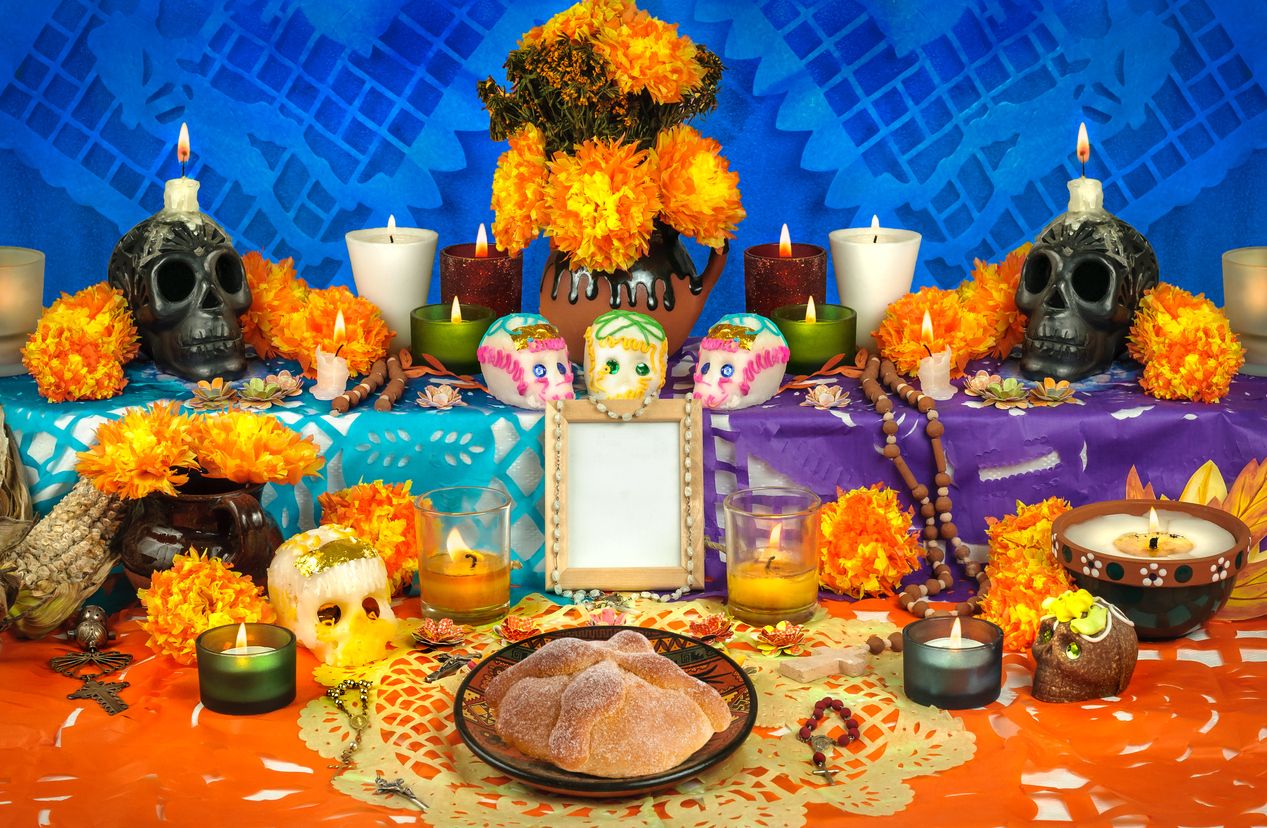October is coming to an end, which means el Día de Muertos (also sometimes written as Día de los Muertos) is right around the corner.
The holiday, which means the Day of the Dead, is celebrated throughout Mexico, particularly in the Central and South regions. Beginning on October 31st and ending November 2nd, family and friends gather to pray for and remember friends and family members who have died.
Learn more about the holiday's traditions through this list of common vocabulary and phrases.
La temporada de muertos
The period from Halloween on October 31 through November 2. El Día de Muertos initially started on November 1st, but gradually became associated with October 31st to coincide with Halloween.
La ofrenda
An offering or memorial for the deceased. Family and friends visit cemeteries to be with the souls of those who have died. They bring food, beverages, photos, and memorable objects.
Ya tenemos todo listo para hacer la ofrenda: cempasúchil, pan de muerto, papel picado y una foto del difunto.
We've got everything ready for the offering: marigolds, bread, tissue paper, and a photo of the deceased.
El altar
An altar where the offerings are placed, either at the cemetery or inside the home. Families usually spend time around the altar praying and telling anecdotes about the deceased.

La flor de muertos; cempasúchil
Marigolds. This word may also be spelled "cempazuchitl" or "zempasúchil."
Marigolds or marigold petals are placed on the altar as part of the offering, on the ground marking the path to the doorway, or as part of the decorations for an outdoor ofrenda. The flowers are believed to attract souls to the offerings.
Trazamos un camino con el cempasúchil para que las almas encontraran la ofrenda.
We made a path with marigolds so that the spirits could find their way to the offering.

Pan de muerto
"Pan de muerto," sometimes referred to as "pan de los muertos," is a round brioche-like bread topped with sugar, traditionally made to celebrate the Day of the Dead in Mexico.
Hoy desayuné pan de muerto con chocolate caliente.
Today I had bread of the dead and hot chocolate for breakfast.
Follow this recipe to make your own!

Calaveritas de azúcar
Skulls made of sugar, exchanged or used as decorations for ofrendas.

Papel picado
Colorful tissue paper with cutout shapes used as decoration.
Calaveras literarias
Short, fun, or ironic poems written and exchanged among friends.
Read some authentic calaveras here.
Catrinas
Intricate skeleton figurines that are often humorous.
For more, read a Spanish-language review of the film Coco or try this interactive video activity.

 Spanish
Spanish
 French
French
 Italian
Italian
 Arabic
Arabic
 Portuguese
Portuguese
 German
German
 Chinese
Chinese
 Japanese
Japanese
 Russian
Russian